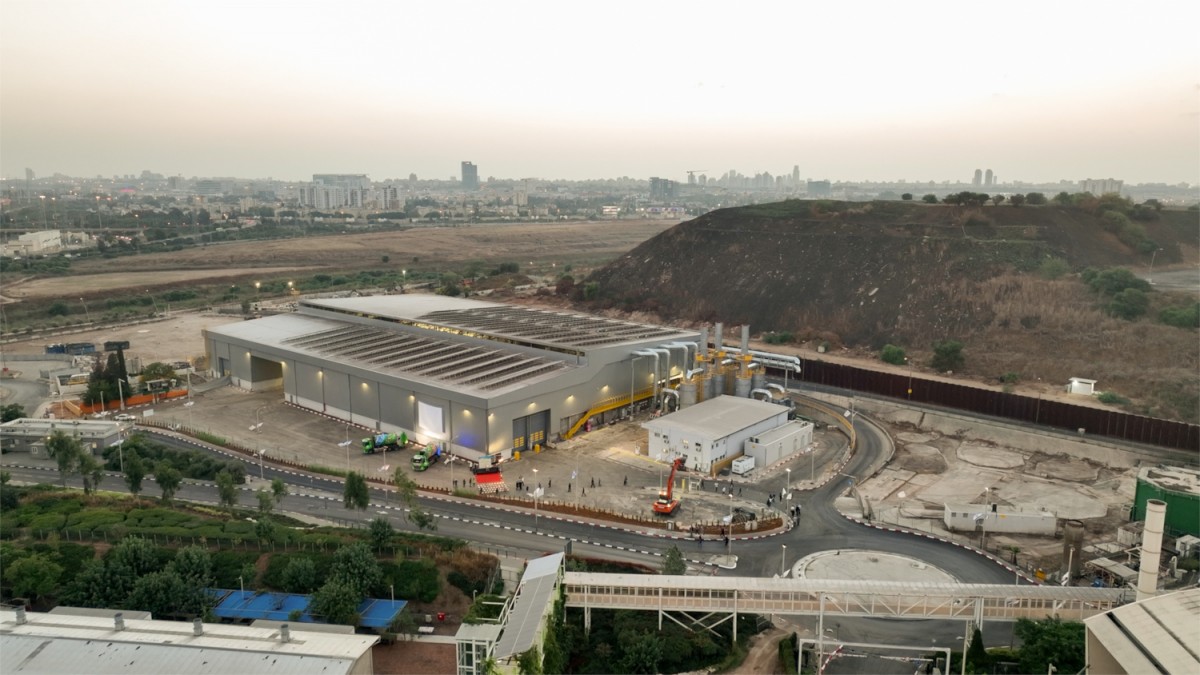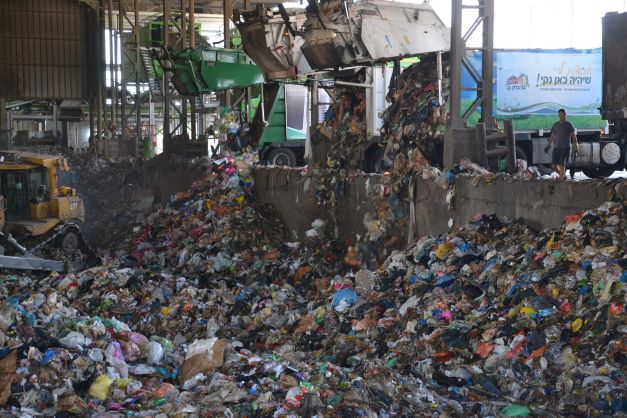

Mafridan – The Upgraded Waste Transfer Station
The transfer station that was built near the closure of the Hiriyah landfill, and put an end to 50 years of dumping waste on Hiriya mound, was re-inaugurated in an upgraded structure on 10.27.2022 and is henceforth called Mafridan ("Sorter"). The new name implies that within two years the station will complete another transformation and become a mechanical and modern waste sorting facility.
Watch the video about the new structure of transfer station
The transfer station structure was opened in 2000 as a temporary solution until the advanced facilities for sorting and handling garbage will be completed. The opening of the transit station in the early 2000s constituted the most modern waste infrastructure in Israel. The closing of the historic Hiriya dumpsite marked the beginning of the era of waste disposal in Israel in regulated sanitary landfills.

With the opening of the RDF plant in 2016, the quantities received at the transfer station began to decrease in favor of being routed to the modern plant which currently sorts half of these quantities and produces over 60% waste sorting products for recycling and return, including shredded material used as a fuel substitute in the "Nesher Ramla" cement plant. The launch of the RDF plant marked the following goal: completing an infrastructure of facilities that will result in the sorting of 100% of the waste received on site and increase the rate of recycling and energy recovery.
A bold decision was made in the Dan Region Association council to convert the old transfer station building into a modern building of the plant called "Mafridan" (which means separator or sorter in Hebrew) to save space and resources. This decision had an operational and challenging meaning. The challenge of building a new facility, which took two years, while the old facility of the transfer station was in regular operation and without it stopping receiving and transporting waste for even one day. The first phase of the construction included: casting concrete floors and new walls, dismantling the old shed and erecting a new and larger roof, erecting electrical rooms, sophisticated air filtration and purification systems, leachate infrastructure, firefighting, remote control systems, and renewing roads and sidewalks.
The completion of the first phase means that the treatment of all the waste received at the Hiriya is carried out in closed facilities while treating the air, following the regulations and standards formulated in recent years, thus preventing the potential for bad odors in the area. Inside the building, the waste is unloaded from the compactor trucks, compressed, and loaded onto transport trucks. All these processes are currently carried out inside the closed building, with the doors of the building opening and closing automatically for the entry and exit of the vehicles. A system for filtering and purifying the air drawn from the space of the station building was installed next to the transit station. This advanced system, which includes activated carbon filters and dust filters, is designed to filter and purify contamination from particles, polluting organic compounds, nitrogen oxides, and other compounds that may be emitted during the initial decomposition stages of household waste. The system, which is the largest of its kind in Israel, is designed to work at a peak capacity of 384,000 cubic meters per hour.
These days preparations are being completed for the start of the second phase where automated sorting systems will be installed inside the renovated building. This phase is expected to be completed at the end of 2024. The separator plant is designed to receive and treat approximately 1,500 tons of waste per day. The waste will be separated into 4 sorted streams of waste for recycling: organic material, plastics, metals, and residues for landfill. At the end of phase 2, there will no longer be the direct routing of waste to landfill and all waste received at the recycling park will undergo mechanical sorting. The cost of the project as a whole is estimated at NIS 110 million, a joint investment by the Dan Region Association and the Ministry of Environmental Protection.
